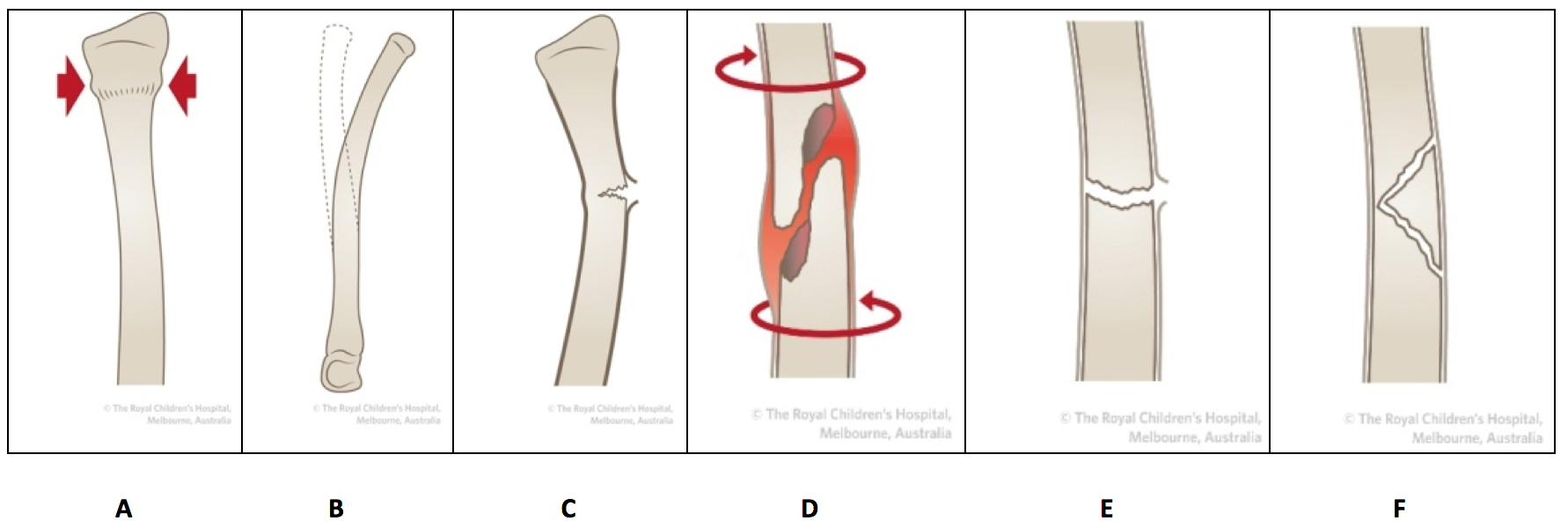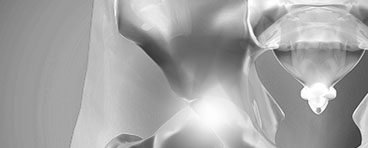Click on the links below to find out more
Paediatric Fractures
DESCRIPTION
Fractures/Broken bones in children are very common and Dr Slattery has extensive experience treating these and the problems that they can present. As children are still growing and have different anatomy, they are not ‘mini adults’ and they need special consideration and treatment.
Types of Fractures
Buckle Fractures (A)
- These are incomplete fractures due to compression forces
Plastic Bending/Bowing (B)
- Children’s bones can be bent to 45 degrees before the cortex is disrupted and a greenstick or a complete fracture occurs. However if the bending force is released the bone may only partially return to its pre-bent position, resulting in plastic bowing.
Greenstick/Incomplete Fractures (C)
- A greenstick fracture occurs when there is sufficient energy to start a fracture but insufficient energy to complete it.
Spiral Fractures (D)
- These result from twisting injuries
Transverse Fractures (E)
- These result from angulation of the bone
Butterfly Fractures (F)
- These are more complex injuries and normally result from higher energy
Avulsion Fractures
- Childrens ligaments are stronger than the bone, and in many cases the ligaments may pull off (“avulse”) a portion of the bone where they insert

Fracture Types
Growth Plate Injuries (Physeal Injuries)
Children have areas of the bones which are responsible for their growth, called growth ‘plates’. These are located near joints, and are most active in younger children and less so as children reach maturity. Growth plate injuries can result in loss of growth, deformity, joint instability and pain. They require special attention and long term followup.

Dr David Slattery
FRACS MBBS (Hons) LLB FAOrthA
Dr David Slattery is an orthopaedic surgeon based in Melbourne with over 10 years of experience, with a special focus on hip and knee joint preservation and replacement. With qualifications in both medicine and law, he brings a unique and comprehensive approach to patient care. His surgical techniques are minimally invasive and evidence-based, designed to reduce pain and enhance recovery.
Trained in leading institutions across Europe and the USA, Dr Slattery offers advanced treatments for a wide range of joint conditions. He is deeply committed to patient outcomes and takes pride in tailoring treatment plans to each individual. Whether you’re an athlete or seeking relief from chronic joint pain, his goal is to restore function and improve your quality of life.







